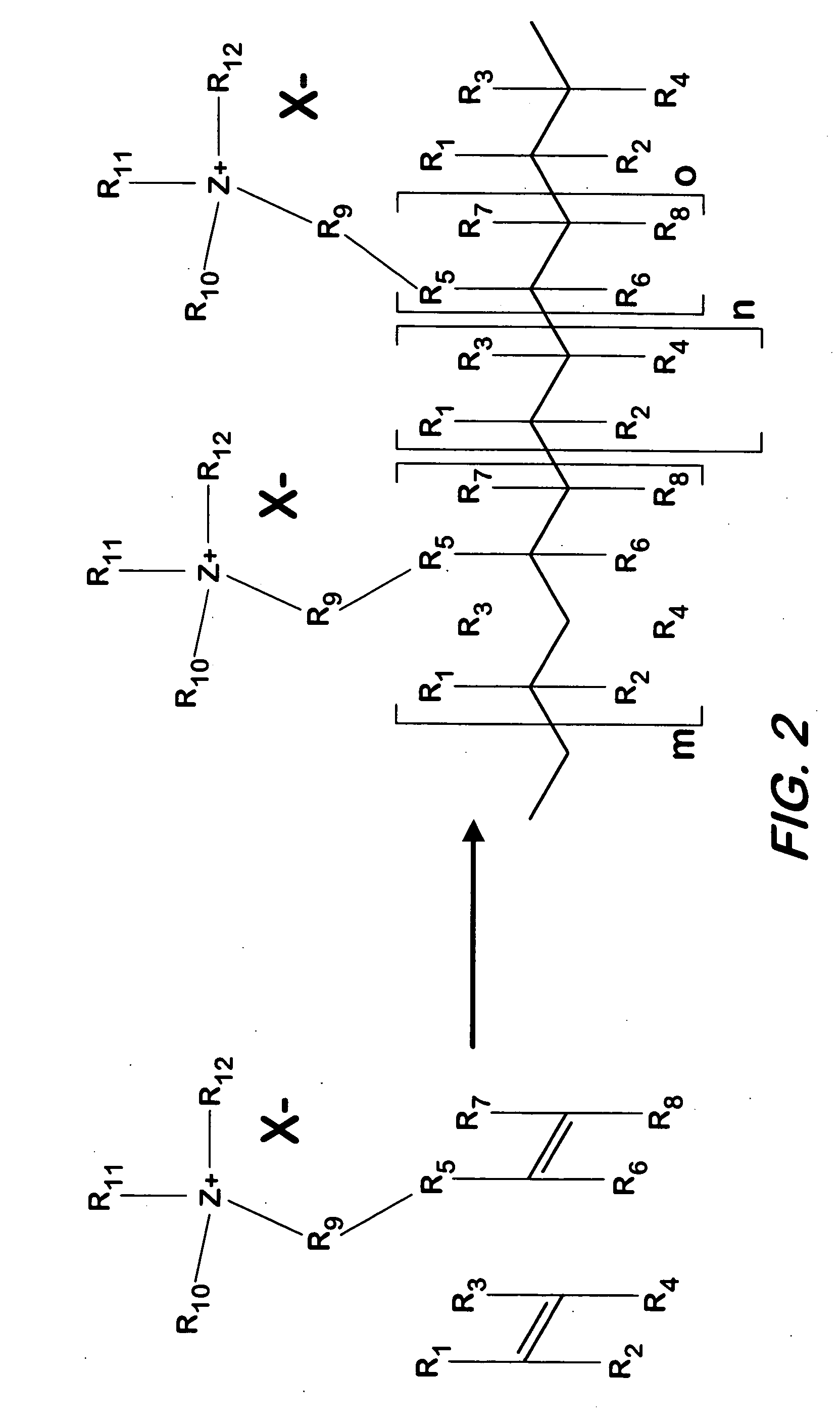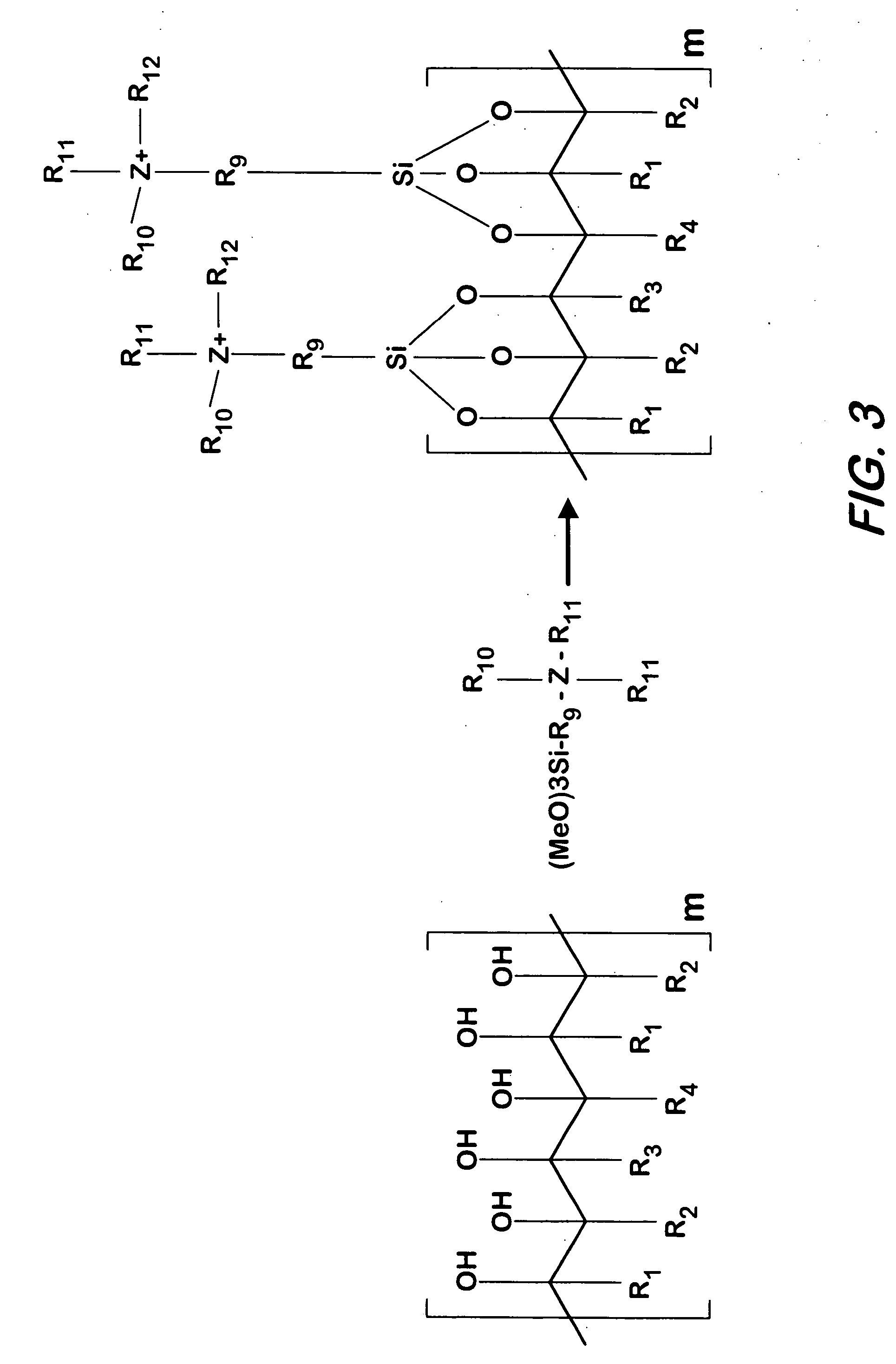Method of preserving food using antimicrobial packaging
a technology of antimicrobial packaging and food, which is applied in the directions of milk preservation, container preventing decay, biocide, etc., can solve the problems of prior art approaches, food spoilage and food poisoning, and the types of antimicrobials are toxic to mammalian species, so as to reduce the surface bacterial, fungus and/or virus count, and increase the shelf life of the enveloped food article
- Summary
- Abstract
- Description
- Claims
- Application Information
AI Technical Summary
Benefits of technology
Problems solved by technology
Method used
Image
Examples
example 1b
Poly (Dimethyloctyl[4-vinylphenyl]methylammonium chloride)
[0128] A solution of the Product of Example 1a. (3.04 g, 20 mmol) in 1:1 IPA: THF (100 mL) was heated to reflux with stirring under argon. N, N-Dimethyloctylamine (3.14 g, 20 mmol) was added and the reaction mixture was refluxed under argon for 24 h. The reaction mixture cooled to room temperature. The volatiles were removed using a rotary evaporator to give a viscous oil. The oil was placed in a 30-35° C. vacuum oven overnight. This gave the title compound as a brittle, white powder (6.1 g). Films could be cast from 5% w / v solutions from the following solvents: IPA, methanol, and 1:1 THF:IPA onto a polyester backing.
example 2
Poly (Dimethyldodecyl[4-vinylphenyl]methylammonium chloride)
[0129] A solution of the Product of Example 1a (3.04 g, 20 mmol) in 1:1 IPA: THF (100 mL) was heated to reflux and stirred under argon. N,N-Dimethyldodecylamine (4.27 g, 20 mmol) was added and the reaction mixture was refluxed under argon for 24 h. The reaction mixture cooled to room temperature. The volatiles were removed using a rotary evaporator to give a viscous oil. The oil was placed in a 30-35° C. vacuum oven overnight. This gave the title compound as a brittle white powder (6.39 g). Films could be cast from 5% w / v solutions from the following solvents: IPA, methanol, and 1:1 THF:IPA onto a polyester backing.
example 3
Poly (Dimethyltetradecyll[4-vinylphenyl]methylammonium chloride)
[0130] A solution of the Product of Example 1a (3.04 g, 20 mmol) in 1:1 IPA: THF (100 mL) was heated to reflux with stirring under argon. N,N-Dimethyltetradecamine (4.83 g, 20 mmol) was added and the reaction mixture was refluxed under argon for 24 h. The reaction mixture cooled to room temperature. The volatiles were removed using a rotary evaporator to give a viscous oil. The oil was placed in a 30-35° C. vacuum oven overnight. This gave the title compound as a brittle, white powder (7.36 g). Films could be cast from 5% w / v solution in IPA onto a polyester backing.
PUM
 Login to View More
Login to View More Abstract
Description
Claims
Application Information
 Login to View More
Login to View More - R&D
- Intellectual Property
- Life Sciences
- Materials
- Tech Scout
- Unparalleled Data Quality
- Higher Quality Content
- 60% Fewer Hallucinations
Browse by: Latest US Patents, China's latest patents, Technical Efficacy Thesaurus, Application Domain, Technology Topic, Popular Technical Reports.
© 2025 PatSnap. All rights reserved.Legal|Privacy policy|Modern Slavery Act Transparency Statement|Sitemap|About US| Contact US: help@patsnap.com



